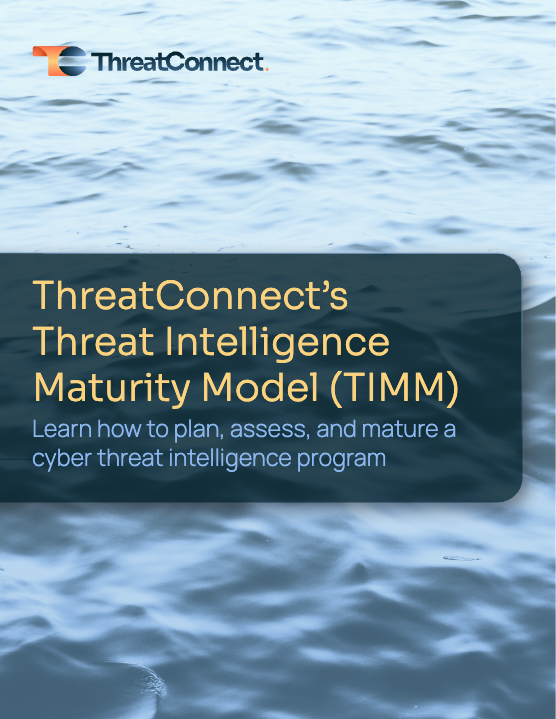Posted
A rapidly evolving cyber threat landscape demands that organizations adopt more than reactive defenses—they need proactive, intelligence-driven strategies. The Threat Intelligence Maturity Model (TIMM) serves as a roadmap for organizations to assess, plan, and advance their cyber threat intelligence (CTI) capabilities, regardless of their journey.
The Five Levels of Threat Intelligence Maturity
The TIMM provides a structured framework to guide organizations through the evolution of their CTI programs. Let’s take a closer look at each stage of maturity:

Maturity Level 1
1. Initial (Getting Started):
Organizations at this level are just beginning their CTI journey. Data collection is ad-hoc, often scattered across spreadsheets or emails. Threat data needs to be refined, creating challenges in deriving actionable insights. The focus here is on aggregating internal and external threat data, organizing it in a central repository, and laying the foundation for future growth.

Maturity Level 2
2. Managed (Warming Up):
At this stage, organizations begin formalizing processes and adopting essential tools to manage threat intelligence. Teams are moving beyond purely reactive responses by using vetted threat intelligence feeds to block threats at the perimeter. Documentation of workflows and establishing a system of record for CTI data mark significant progress.

Maturity Level 3
3. Defined (Expanding Capabilities):
CTI teams have started producing operational and tactical intelligence while automating repetitive tasks like data enrichment. Organizations define key use cases at this level, such as improving threat detection and building a unified threat library. Automation and visualization tools begin to play a critical role in enabling proactive threat identification.

Maturity Level 4
4. Quantitatively Managed (Operationally Established):
Organizations at this level have robust, documented workflows, multiple threat intelligence data sources, and a well-structured approach to strategic analysis. Teams track and act on persistent threat actors, contribute to information-sharing communities, and align intelligence outputs with broader security operations. Measuring CTI program effectiveness becomes a key focus.
5. Optimizing (Driving Strategic Impact):

Maturity Level 5
At the pinnacle of maturity, organizations fully operationalize CTI, leveraging automation, AI-driven analytics, and codified workflows to deliver actionable intelligence at scale. CTI becomes a strategic asset, informing C-level decisions and supporting incident response, risk management, and offensive security efforts. Teams at this level are proactive, hunting threats before they materialize and continuously refining their operations to stay ahead of adversaries.
Why the Maturity Model Matters
The TIMM provides a clear pathway for organizations to grow their CTI programs in alignment with their resources and needs. It acknowledges that not all organizations will reach the highest level of maturity—and that’s okay. The key is to use the model to identify opportunities for improvement, whether it’s automating repetitive tasks, improving data analysis, or integrating intelligence into broader security strategies.
Ready to Advance Your Threat Intelligence Program?
No matter where your organization stands today, the Threat Intelligence Maturity Model can help you plan your next steps. By understanding the distinct stages of maturity, you can identify gaps, prioritize investments, and build a CTI program that delivers measurable value.
Download the complete Threat Intelligence Maturity Model whitepaper to explore actionable insights and practical guidance for maturing your CTI program. Let’s take your threat intelligence to the next level.
